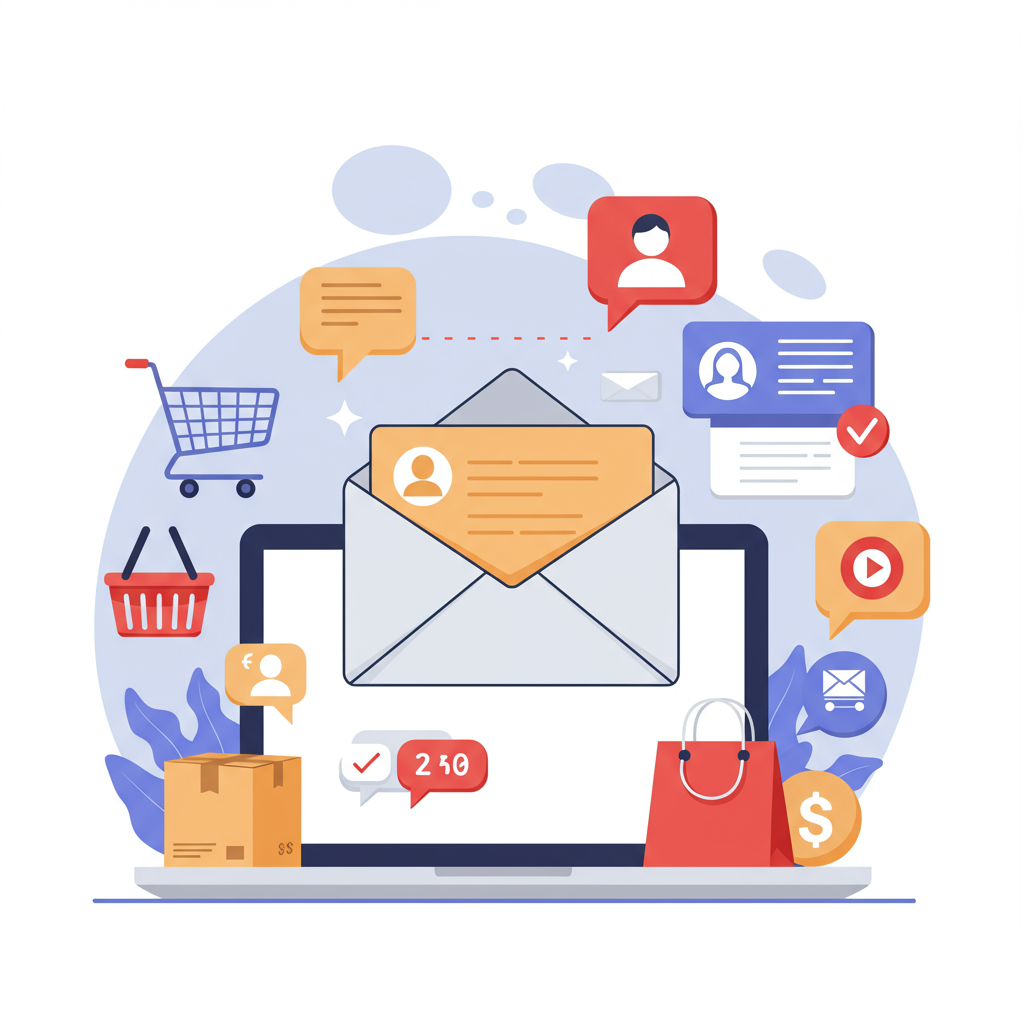Mastering customer engagement and driving sales through strategic email campaigns.
Hello fellow Shopify merchants! As we look ahead to 2025, one thing remains undeniably true: email marketing is not just alive, it’s thriving as a cornerstone of successful e-commerce.
In a world saturated with digital noise, your email list is your most valuable asset, offering a direct, personal line to your customers.
It’s about building relationships, fostering loyalty, and driving repeat purchases, all while maintaining a high return on investment.
So, let’s dive into my top tips for supercharging your Shopify email marketing strategy in 2025.
First, let’s talk about list building. This isn’t just about collecting emails; it’s about attracting engaged subscribers who genuinely want to hear from you.
Implement strategic pop-ups on your Shopify store, offering an immediate incentive like a discount code or exclusive content for signing up.
Ensure these pop-ups are well-timed and non-intrusive, perhaps appearing after a user has scrolled a certain percentage or spent a few seconds on a page.
Consider lead magnets beyond discounts, such as free guides, checklists, or early access to new product launches. These provide value upfront and attract higher-quality leads.
Next, segmentation is absolutely critical. Sending generic emails to your entire list is a relic of the past. Your customers are unique, and your communication should reflect that.
Segment your audience based on purchase history, browsing behavior, demographics, location, and even engagement levels with your previous emails.
For instance, you might have segments for first-time buyers, repeat customers, high-value customers, or those who’ve viewed specific product categories but haven’t purchased.
This allows you to craft highly relevant messages that resonate deeply with each group, significantly boosting open rates and conversions.
Automation is where the magic truly happens. Set up automated email flows that trigger based on specific customer actions or inactions.
Your welcome series is paramount. This is your chance to introduce your brand, share your story, and set expectations for future communications, often including a first-purchase incentive.
An abandoned cart flow is non-negotiable. Remind customers about items left behind, perhaps with a gentle nudge or a limited-time offer to complete their purchase.
Post-purchase sequences are vital for building loyalty. Thank customers, provide order updates, ask for reviews, and recommend complementary products to encourage repeat business.
Don’t forget win-back campaigns for inactive subscribers. A well-crafted email can re-engage dormant customers and bring them back to your store with a compelling offer.
Personalization goes hand-in-hand with segmentation and automation. Beyond just using a customer’s first name, leverage dynamic content.
Show product recommendations based on their browsing history or past purchases. Tailor images and offers to their specific interests and preferences.
Your email content strategy needs to be balanced. It’s not just about promotions. Provide value through educational content, behind-the-scenes glimpses, or lifestyle tips related to your products.
Storytelling can be incredibly powerful. Share your brand’s journey, customer success stories, or the inspiration behind your products to build an emotional connection.
Always include a clear, compelling call to action (CTA) in every email. Make it easy for your subscribers to take the next step, whether it’s to shop, read, or learn more.
A/B testing is your best friend for continuous improvement. Test different subject lines, sender names, email layouts, CTA button colors, and even send times to see what resonates best.
Small tweaks based on data can lead to significant improvements in your email marketing performance over time, optimizing your campaigns for maximum impact.
Don’t overlook analytics. Track key performance indicators (KPIs) like open rates, click-through rates, conversion rates, and revenue generated from email campaigns.
Use this data to refine your strategies. What’s working? What isn’t? Be prepared to adapt and optimize constantly based on real-world performance.
Compliance is non-negotiable. Ensure your email practices adhere to regulations like GDPR, CCPA, and CAN-SPAM. Always provide a clear and easy-to-find unsubscribe option.
Integrate your email marketing platform seamlessly with your Shopify store. Most major platforms offer robust integrations that pull customer data directly.
This integration allows for sophisticated segmentation and automation based on real-time Shopify data, making your campaigns incredibly powerful and relevant.
Looking ahead, I believe AI will play an even larger role in hyper-personalization, predictive analytics, and even content generation for emails. Stay open to these advancements.
By focusing on these strategies – smart list building, deep segmentation, robust automation, genuine personalization, valuable content, and data-driven optimization – you’ll be well-positioned for email marketing success in 2025 and beyond.
What do you think about these tips? Are there any strategies you’ve found particularly effective for your Shopify store?
Remember, email marketing is a marathon, not a sprint. Consistent effort and a customer-centric approach will yield the best results for your e-commerce business.
I encourage you to start implementing these tips today and watch your Shopify store thrive with a more engaged and loyal customer base.






